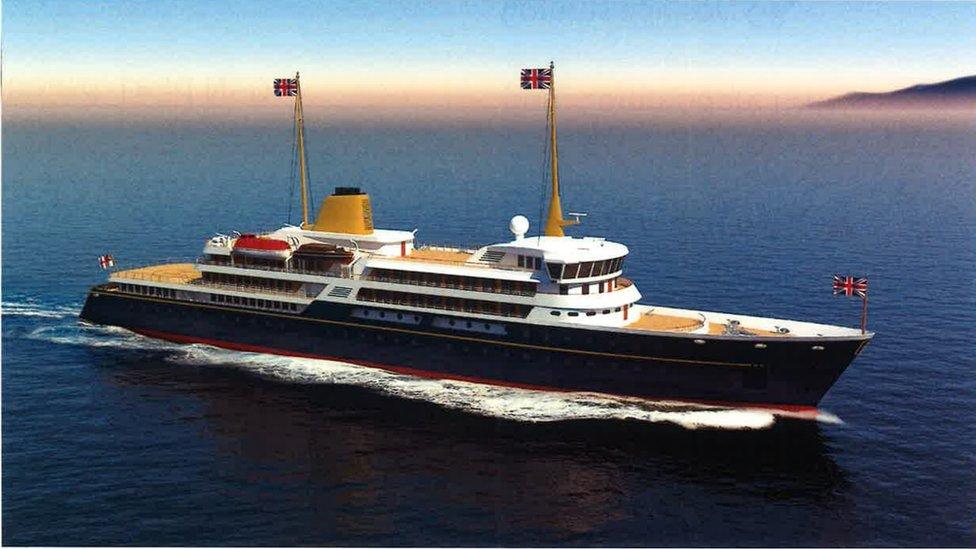HMS Belfast: What's in a name?
- Published
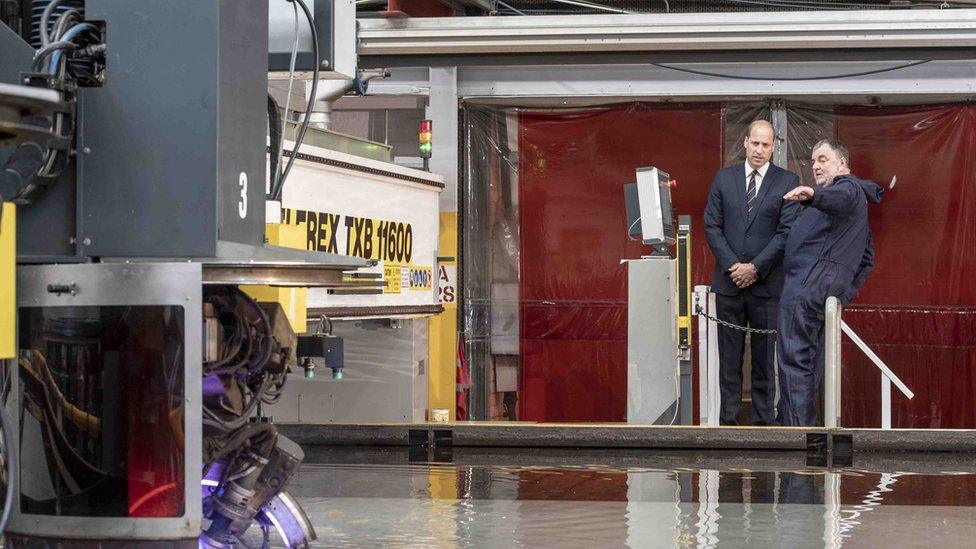
Prince William cut the steel on the new HMS Belfast on Tuesday
On Tuesday, Prince William cut the steel on HMS Belfast, a ship which will form part of a modern fleet serving the UK for decades to come.
Pushing down on a button in BAE Systems' Govan shipyard on Glasgow's River Clyde, he set to work lasers which moved across the first steel plate on the £1.2bn Type 26 warship.
The high-tech process is a long way from how its predecessor came into the world.
The keel laying - the starting point for construction at the time - for the first HMS Belfast, which has been moored on the River Thames for the past 50 years, took place in the Belfast shipyard Harland and Wolff in 1936.
The ship went on to be involved in some of the key battles of World War Two - including the Normandy landings and the Battle of North Cape.
It later also played a role in the Korean War.
With construction underway on the modern HMS Belfast, why do the two ships have the same name?
'The idea of union'
While they may carry the same name, there is actually no direct link between the ships.
Rather the vessel is part of a new class of ship, which are all named after cities in the UK, and is being built alongside HMS Cardiff and HMS Glasgow.
A spokesperson for the Ministry of Defence told the BBC that the names are put forward by the Ships' Names and Badges Committee, which contains various senior naval personnel, and acts as an advisory body.
"Someone somewhere, in the Royal Navy or in government, comes up with an idea - in this case, we are looking to reinforce the idea of the union," the spokesperson said.
"Let us name our ships after the major cities of the United Kingdom."
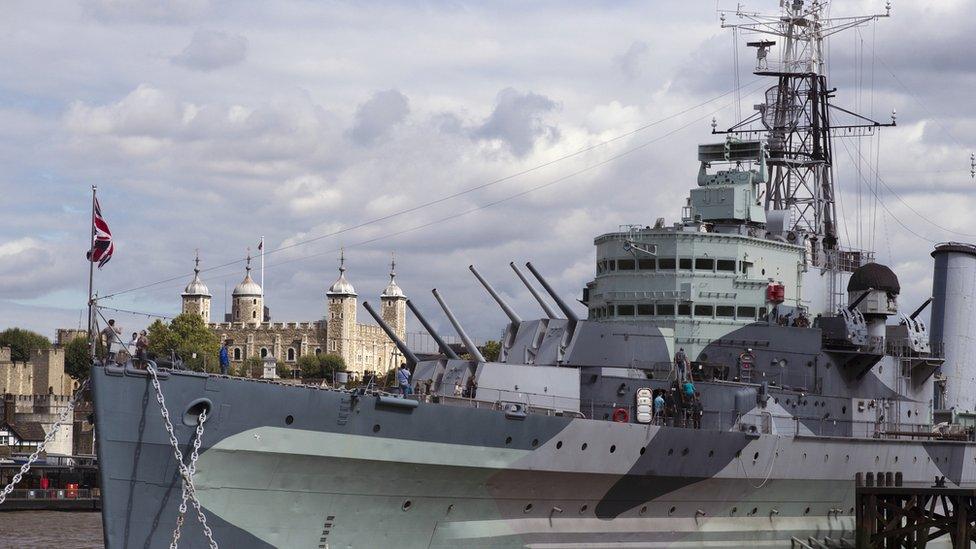
The original HMS Belfast belongs to the Imperial War Museum, and sits on the River Thames
The original HMS Belfast belongs to the Imperial War Museums, and operates as a museum ship on the River Thames in London.
Before the new HMS Belfast commissions (the process of entering active service), the World War Two warship will have a slight update on its name - becoming HMS Belfast (1938), marking the year it launched.
Speaking in 2017, external, Diane Lees, director general of Imperial War Museums, said she was "delighted that the name HMS Belfast will return again to the Royal Navy's front line as a major warship".
"We welcome the opportunity this will bring for our internationally significant museum to have a close affiliation with the new Belfast, enabling a powerful link between the Royal Navy's past and present," she said.
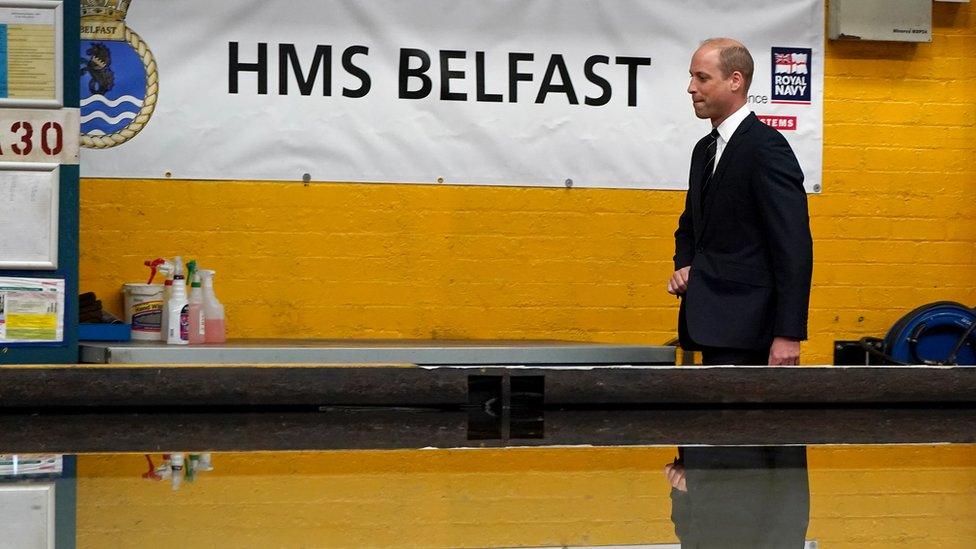
Prince William told workers in Glasgow his grandfather the Duke of Edinburgh would have been fascinated by the shipbuilding process
Robert Rumble, the curator of the Imperial War Museums, told BBC News NI that naming ships after cities is a common practice with medium ships such as cruisers.
"The Royal Navy has always gloried in its traditions, none more so than the tradition of naming ships," said Mr Rumble.
"Names such as Ark Royal, Queen Elizabeth, or Invincible have often been repeated in British naval vessels since the days of the age of sail.
"In fact there have even been three aircraft carriers all named Ark Royal during the 20th Century."
The crew of the new HMS Belfast, he added, would "glory in the tradition of its name" and "share the same motto and ship's crest" (the Belfast seahorse) as the original.
Another anomaly with the new HMS Belfast is that it has gone into construction on the other side of the North Channel, on Glasgow's River Clyde.
While Belfast's historical identity may be tied up with shipbuilding, the industry has been much less active in recent years, with Harland and Wolff building its last ship - a Ministry of Defence ferry called the Anvil Point - in 2003.
"For all warship builds, there is a tendering process, bids are received, and builders are selected - in this case it is BAE Systems who are building all of the class," the Ministry of Defence said.

Prince William addressed workers at the BAE Systems shipyard on Tuesday
Still, while the construction did end up in Glasgow, Belfast could have been in the running.
Unveiling the name of HMS Belfast in 2017, then Defence Secretary Sir Michael Fallon addressed a crowd gathered in the Harland and Wolff shipyard, and said a process would take place which could see ships built in different parts of the UK, and assembled at a central hub.
"This shipyard once again has the chance to be involved in building a British warship thanks to the competition to build a new class of light frigates for our growing Royal Navy," he said at the time.
All eight of the Type 26 warships will be built on the Clyde River in Scotland.
Allow X content?
This article contains content provided by X. We ask for your permission before anything is loaded, as they may be using cookies and other technologies. You may want to read X’s cookie policy, external and privacy policy, external before accepting. To view this content choose ‘accept and continue’.
The Type 26 warships have the primary purpose of anti-submarine warfare, and reducing environmental impact is being considered as part of the process.
These include having a hull designed to optimise fuel efficiency, and a diesel engine which reduces nitrogen oxide exhaust emissions.
Related topics
- Published26 May 2020
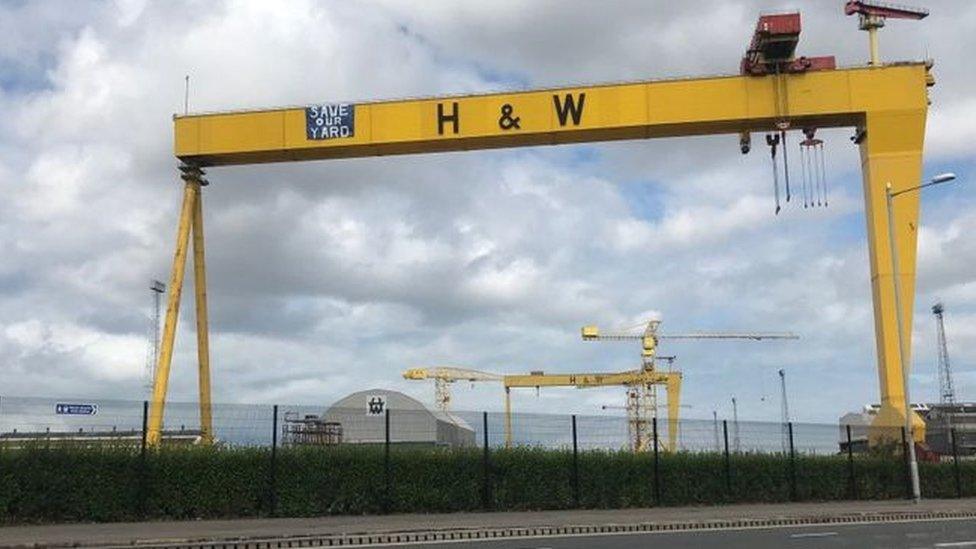
- Published6 August 2019
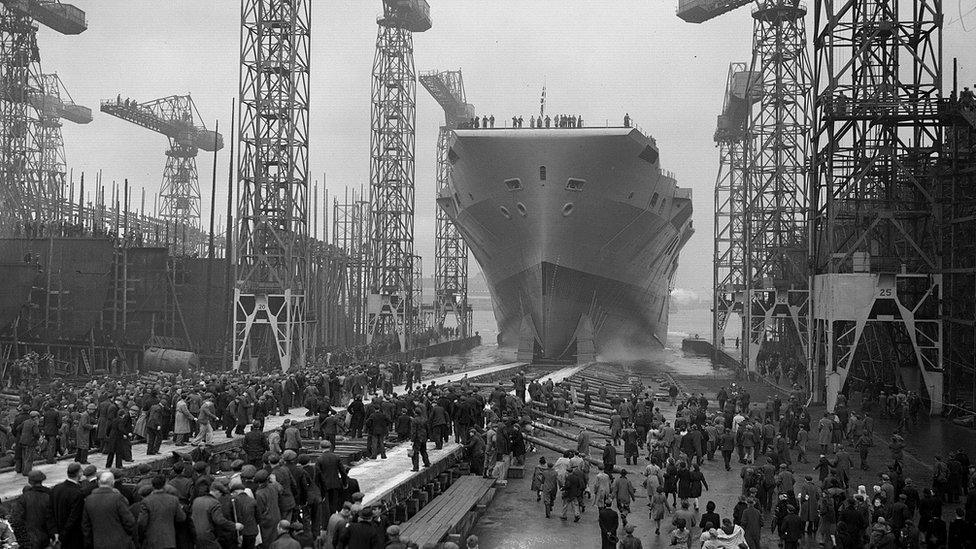
- Published21 June 2021
